 The Empress by Nick
The Empress by Nick
The majestic grand hotels of Canada are among the greatest Canadian landmarks. Some of them, perhaps the most beautiful, were originally built to accommodate the passengers of the big old Canadian railway companies in luxury and style. The Canadian Pacific Railway, the Grand Trunk Railway and its successor, the Canadian National Railway were competing companies which knew how to show off their confidence and grandeur. They built some of the most architecturally ambitious rural and urban hotels in Canada, which still operate today. In part two of our mini-series, we'll have a look at four amazing historical Canadian grand railway hotels.
1. The Empress Hotel
 The Empress by Tess Shebaylo
The Empress by Tess Shebaylo
This hotel has become a symbol for the city of Victoria, British Columbia, through more than a century of its existence. Built between 1904 and 1908, this Edwardian, château-style hotel is one of the oldest and most famous hotels in Victoria, located on Government Street, overlooking the Inner Harbour. The building was designed by Francis Rattenbury and built by the Canadian Pacific for their steamship line just a block away. Originally a business hotel, it successfully remarketed as a resort for tourists visiting the then newly-emerging tourist destination of Victoria. Throughout its history, The Empress hosted kings, queens, movie stars and many other famous people. The hotel underwent a complete renovation in 1989, but was not given a new image; the aim was, rather, to restore its original pre-war elegance. It features 477 rooms, an indoor swimming pool and four restaurants -- one decorated in Victorian-era, Colonial Indian style, and one named after its frequent visitor, author Rudyard Kipling.
2. Château Laurier Hotel
 Chteau Laurier by Narasimman Jayaraman
Chteau Laurier by Narasimman Jayaraman
Commissioned by Grand Trunk Railway president Charles Melville Hays and constructed between 1909 and 1912, this Châteauesque style hotel is a landmark in Downtown Ottawa, Ontario. It is named after Sir Wilfrid Laurier, who was then the Prime Minister of Canada and who helped secure the hotel's construction site. The site generated controversy since a part of Major's Hill Park had to make way for the construction. The hotel didn't open as scheduled in April 1912 because the president of Grand Trunk Railway, who was returning to Canada for the ceremony, vanished in the wreck of the RMS Titanic when it sank on April 15. The Château Laurier was one of the most successful Canadian National Railway hotels (after Grand Trunk became part of said company) and hosted a plethora of heads of state, royalty, political figures, celebrities and members of the Canadian elite. It was even home to the Canadian Broadcasting Corporation's local English and French radio stations until 2004. The grand hotel is located next to the capital's most important landmarks like Parliament Hill, the Rideau Canal, the Rideau Centre and the National Gallery of Canada.
 Chteau Laurier by Charles Crosbie
Chteau Laurier by Charles Crosbie
3. The Algonquin Hotel
 Algonquin Hotel by Colin Harris
Algonquin Hotel by Colin Harris
This famous coastal resort hotel was built in the Tudor style in 1889 by the St. Andrews Land Company, established by wealthy American businessmen. It's located in St. Andrews, New Brunswick -- the first seaside resort town in Canada. The four-storey hotel has an impressive, half-timbre, castle-like facade. Most importantly, all of its 80 guest rooms have their own fireplace and bathtub designed with four taps! The hotel was famous for its saltwater baths, so two taps were for fresh water and two for salt water, which was pumped from Passamaquoddy Bay to the hotel on the hill and held in tanks in the attic. Its location also channels the clean, dry air of the Bay of Fundy, believed to have healing and invigorating properties. The famous resort, which hosted scores of presidents and royalty, offers a modern yet century-old golf course, and is alleged to be haunted.
4. Château Frontenac
 Chteau Frontenac by Anna Harris
Chteau Frontenac by Anna Harris
One of the most stunning examples of the Château style, this monumental hotel in Quebec City was designated a National Historic Site of Canada in 1980. This grand hotel was designed by the American architect Bruce Price and built for the Canadian Pacific Railway at the end of the 19th century. It is the sister-hotel of the Banff Springs hotel, which opened five years earlier, in 1888. The hotel's name honours Louis de Buade, Count of Frontenac, who governed the colony of New France in the 17th century. It is the most prominent feature of Quebec City's skyline, built on a tall cape overlooking the Saint Lawrence River, with an amazing view that spans many kilometres. This symbol of Quebec is built near the Plains of Abraham and the historic Citadel, and is the most photographed hotel in the world (it holds the Guinness World Record).
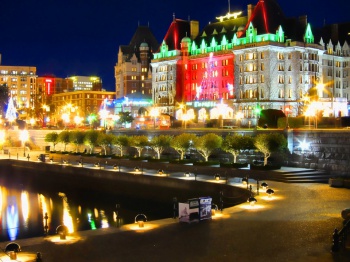
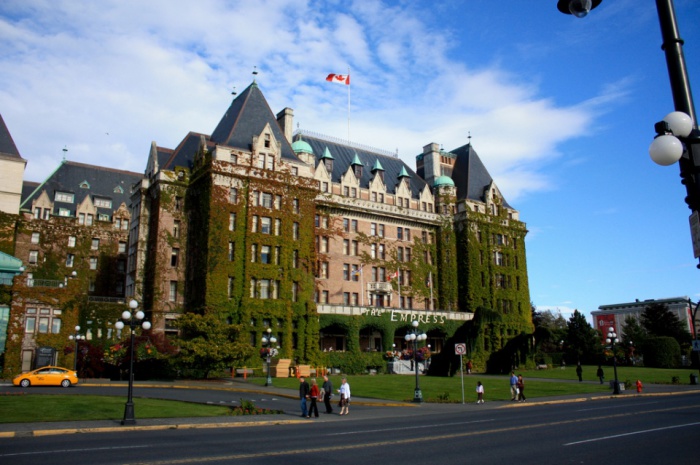
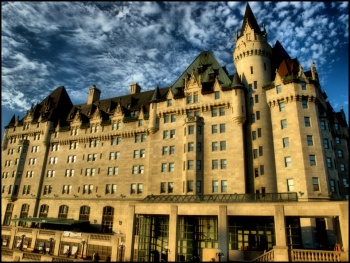

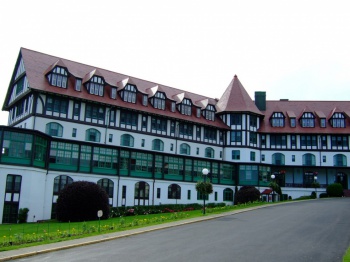
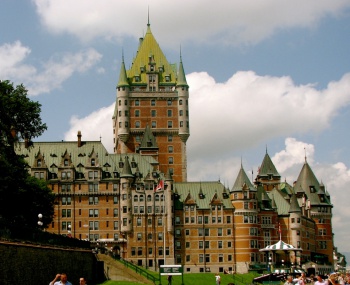
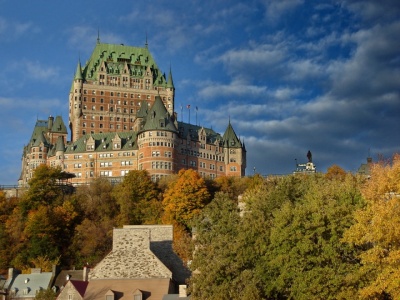
Hi, Thank you for using my Chateau Frontenac picture!
Best Regards